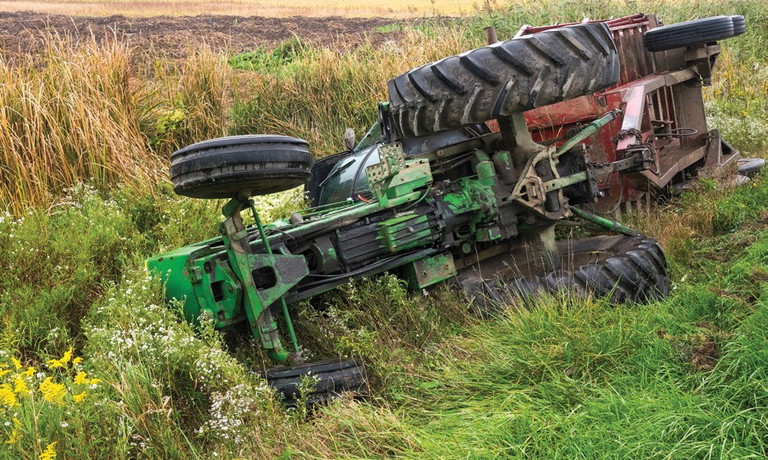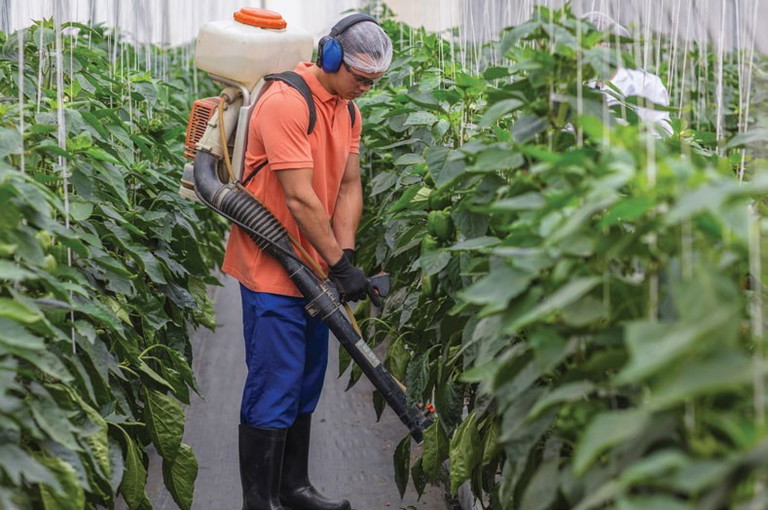BUSINESS farm safety

FARM SAFETY
review tools
When was your last farm safety review? When was the last time you and your management team actively discussed and acted on farm safety? Be honest.
Words Joel Dinsdale, Quality Assurance Coordinator, vegetablesWA
IF it’s been a while, now’s the time to lean into all things safety and raise the bar. After all, prevention is a small price to pay to avoid near misses, injuries, or in the worst-case scenario fatalities.
I recently attended a food safety webinar where a speaker raised an interesting point: “good practice versus best practice.” In New Zealand, experts are increasingly favouring the term good practice over best practice, as it encourages continuous improvement rather than suggesting a final, unreachable standard.
While best practice might imply you’ve already reached the highest level, good practice leaves room for growth “good, but let’s keep getting better.”
Table 1. Risk rating table — for working out level of risk.
Use the vertical and horizontal columns to consider both the likelihood of injury or harm to health and the consequences to work out the level of risk.

Risk assessment is a ‘best estimate’ on the basis of available information. It is important the responsible person undertaking a risk assessment has the necessary information, knowledge and experience of the work environment and work process, or such a person is involved.
Source: OSH in the Vegetable Growing Industry
Maybe this shift in thinking could apply to general Occupational Safety and Health (OSH) as well. Safety isn’t a destination — it’s a journey. And we should always be asking how we can improve.
From good to great: taking the next step
If you’re reviewing your near misses, incident and injury logs, and talking to your employees, and there’s nothing to report or act upon, then that’s great. But let’s not stop there. It’s time to take the next step from good practice to best practice by asking ourselves, “What can we do better?”
To support you in reviewing and updating your safety systems,
WorkSafe WA has developed a valuable resource that could be just what your business needs to take that next step.
The document, OSH in the Vegetable Growing Industry, addresses key safety risks faced by vegetable producers, including mobile plant, manual tasks, hazardous substances, electrical safety, personal protective equipment (PPE), noise, slips, trips, falls, and more.
Packed with practical tips and insights, it’s designed to help you strengthen your safety systems. You’ll also find useful checklists to guide your business through a thorough review process (see Table 1).

Pesticides are often classified as hazardous substances and can harm workers, other people or the environment if not used correctly.
Supporting ethical standards
If your business is working within ethical certification frameworks like Fair Farms or SEDEX SMETA, this document can support your efforts to review and document the OSH components required by those standards. While it’s not a silver bullet, it’s a valuable tool that can be used to assist with compliance.
Not a vegetable producer? WorkSafe WA also offers a suite of similar resources for other farming sectors. Visit www.worksafe.wa.gov.au to explore tools tailored to your operation.
MORE INFORMATION
Got a Question or Story to Share? If you have an OSH-related question or a workplace safety story that deserves to be heard, I’d love to help share it. Whether it’s a challenge you’ve faced or a success worth celebrating, your insights can make a real difference. Please reach out to joel.dinsdale@vegetableswa.com.au as I’d love to support and share your stories and the issues that matter to you.
Download the document direct from Worksafe.wa.gov.au

Scan me